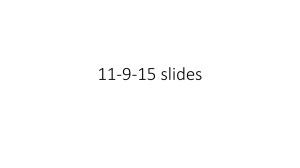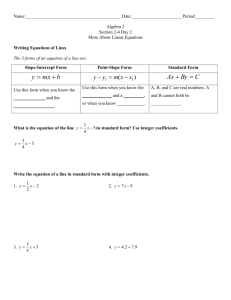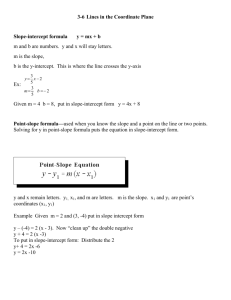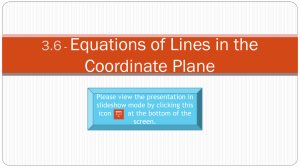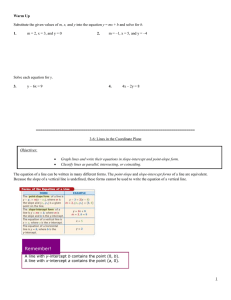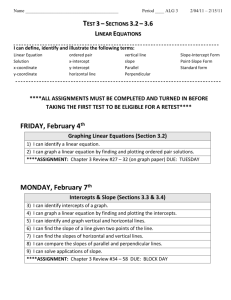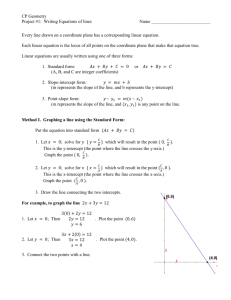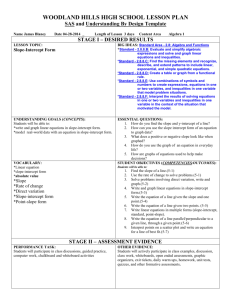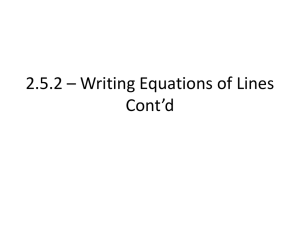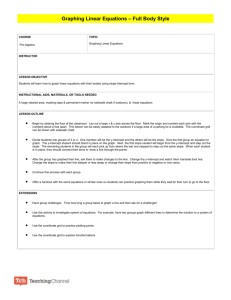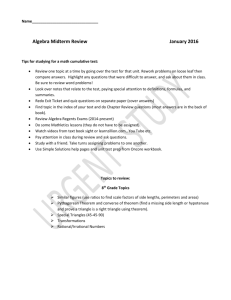Linear Equations: Forms, Slope, and Intercepts
advertisement
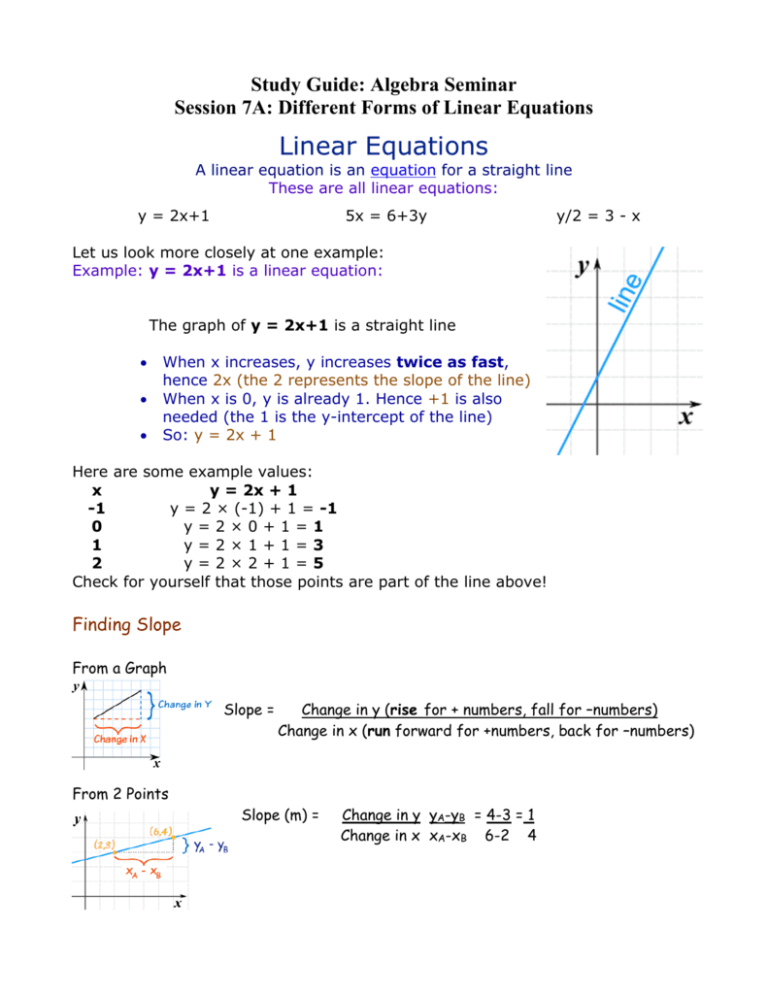
Study Guide: Algebra Seminar Session 7A: Different Forms of Linear Equations Linear Equations A linear equation is an equation for a straight line These are all linear equations: y = 2x+1 5x = 6+3y y/2 = 3 - x Let us look more closely at one example: Example: y = 2x+1 is a linear equation: The graph of y = 2x+1 is a straight line When x increases, y increases twice as fast, hence 2x (the 2 represents the slope of the line) When x is 0, y is already 1. Hence +1 is also needed (the 1 is the y-intercept of the line) So: y = 2x + 1 Here are some example values: x y = 2x + 1 -1 y = 2 × (-1) + 1 = -1 0 y=2×0+1=1 1 y=2×1+1=3 2 y=2×2+1=5 Check for yourself that those points are part of the line above! Finding Slope From a Graph Slope = From 2 Points Change in y (rise for + numbers, fall for –numbers) Change in x (run forward for +numbers, back for –numbers) Slope (m) = Change in y yA-yB = 4-3 = 1 Change in x xA-xB 6-2 4 Different Forms There are many ways of writing linear equations, but they usually have constants (like "2" or "c") and must have simple variables (like "x" or "y"). Examples: These are linear equations: y = 3x - 6 y - 2 = 3(x + 1) y + 2x - 2 = 0 5x = 6 y/2 = 3 Slope-Intercept Form The most common form is the slope-intercept equation of a straight line: Example: y = 2x + 1 (Our example from the top, which is in Slope-Intercept form) Slope: m = 2 Intercept: b = 1 Point-Slope Form Another common one is the Point-Slope Form of the equation of a straight line: y = y1 + m(x - x1) Example: y =3 + ¼(x - 2) x1 = 2 y1 = 3 m = ¼ (2,3) is a point on the line ¼ is the slope General Form And there is also the General Form of the equation of a straight line. This can be found by manipulating (using balanced equations and your understanding of number properties) an equation written in slope-intercept or point-slope form. Ax + By = C (A and B cannot both be 0) Example: 3x + 2y=- 4 A = 3 From http://www.mathsisfun.com/algebra/linearB = 2 equations.html C = -4
